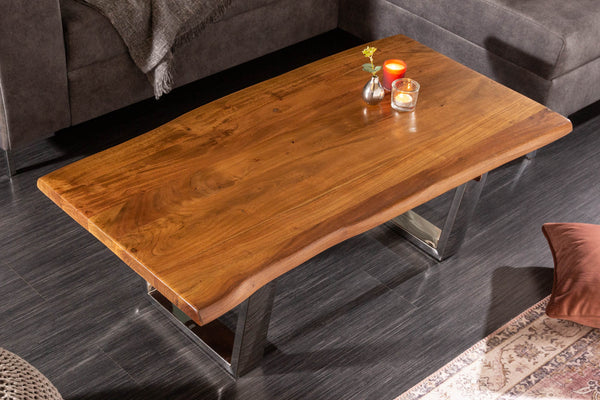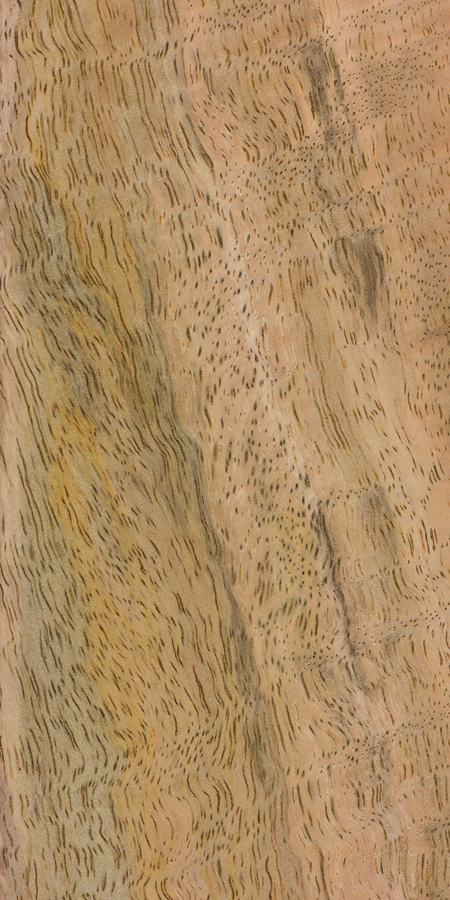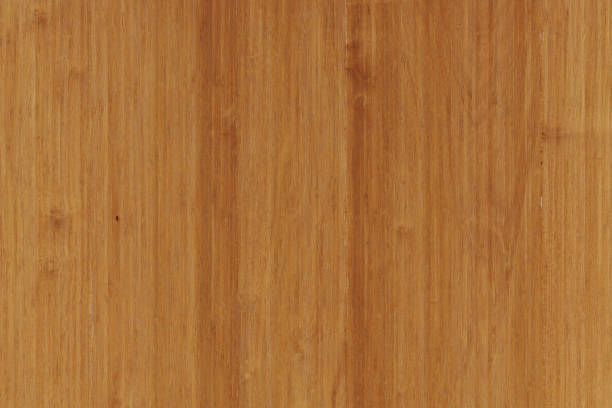Mango wood and acacia wood are both popular choices for furniture, each offering its own set of advantages depending on your needs and preferences.
Mango wood is known for being relatively durable, but it’s not as tough as some other hardwoods like Acacia wood. While it can withstand moderate wear and tear, it is prone to scratches and dents over time. In terms of appearance, mango wood boasts a beautiful, varied grain pattern with dark and light spots, giving each piece a unique look. The wood typically has a warm golden or reddish-brown hue that adds a touch of warmth to any room. One of the advantages of mango wood is its medium density, which makes it lighter and easier to move around. However, it does require regular maintenance, such as oiling, to prevent it from drying out and cracking, and it should be kept away from extreme temperatures and moisture.

Acacia wood, on the other hand, is highly durable and resistant to wear and tear. It is a tough and solid wood that can withstand frequent use and is naturally resistant to moisture and scratches, which makes it ideal for furniture that will be used regularly. Acacia wood features a bold, distinctive grain pattern and has a rich dark brown to reddish colour, often with a wavy texture and glossy finish. Its density makes it heavier than mango wood, which can be both a pro and a con depending on how much you need to move the furniture. While acacia is naturally resistant to moisture and pests, it still requires occasional maintenance, such as cleaning and oiling, to keep it in good condition.

Here’s how Mango and Acacia wood pattern looks like
| Mango Wood | Acacia Wood |
 |  |
When it comes to sustainability, mango wood is an eco-friendly option since it is harvested from trees that are no longer productive for fruit production. This makes it a by-product of mango farming, which helps reduce waste. Acacia wood is also considered sustainable, especially when sourced responsibly from fast-growing species, though some acacia species are endangered, so it’s important to choose certified sustainable sources.
In terms of cost, mango wood is generally more affordable than acacia. Its availability and lower price make it an attractive choice for those on a budget. Acacia wood, however, tends to be more expensive due to its durability and the complexities involved in harvesting it. However, the higher price might be justified by its longevity and resistance to wear and moisture.
In terms of usage, mango wood is best for indoor furniture pieces like coffee tables, bookshelves, and decorative items. It works well for more casual or modern furniture styles. Acacia, being heavier and more durable, is ideal for heavy-duty furniture such as dining tables, storage cabinets, and outdoor furniture due to its ability to withstand the elements and frequent use.
Ultimately, if you’re seeking an affordable, unique option for indoor furniture and don’t mind a bit more maintenance, mango wood could be the right choice. However, if you need durable, long-lasting furniture that can handle heavy use and exposure to the elements, acacia wood is a solid investment. It all depends on the type of furniture you’re looking for and how much maintenance you’re willing to commit to.
In Bangalore, there is a growing trend towards mango wood furniture, especially among metro customers due to its affordability for those looking to add elegance to their homes without a significant investment. However, acacia wood remains a preferred option for those seeking durability and water resistance, particularly for outdoor furniture. In terms of pricing, Mango wood retails at around ₹1500/Cft and Acacia wood retails at about ₹2000/Cft depending on the quality and log yield. It is more important that you are aware of how the timber is sourced and the impact of the timber on future woodworking in your project, along with the usability and longevity of the furniture.
In summary, people in Bangalore prefer both acacia and mango wood furniture. They favour acacia wood for its durability and water resistance, while they appreciate mango wood for its affordability and unique aesthetic appeal.
